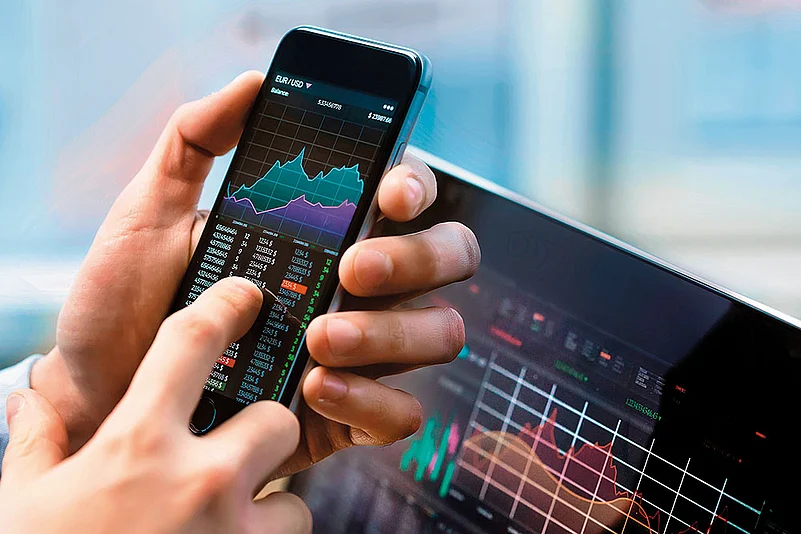Queries
I invested in an initial public offer (IPO) this year and made huge gains. A friend suggested I explore ‘options’ trading to capitalise on market upswings. How should I proceed?
IPO investing and options trading is quite different and requires different skillsets of trading. IPO investing has its own set of traders who look at gaining from immediate price appreciation after listing in the secondary markets. In recent times, it has been quite successful due to significant demand from investors.
Elsewhere, option trading requires leverage and derivatives, and is used for both market upswing and downswing. Importantly, the time sensitive nature of derivatives is one aspect one should understand before getting into option trading. Also, derivatives are supposed to be hedging instruments one should use wisely, given its associated leverage.
It’s advisable not to enter into derivatives trading without properly understanding the basic concepts, as it could otherwise result in huge financial losses due to its zero-sum nature unlike in the case of equities.
I am 35 years old and usually invest in mutual funds for equity exposure. I currently have Rs 2 lakh in surplus funds that I wish to invest in stocks for the long term. Could you suggest some suitable sectors?
Calendar year 2024 was a roller-coaster year for domestic equities, with the market scaling new highs of 26,300 levels in September 2024, and then giving up half the gains thereafter and closing the year with 10 per cent returns. Notably, mid- and small-caps continued to outperform and were up 25 per cent in CY24.
The volatility in index was largely a function of plethora of events, such as geo-political tensions, elections in major economies, including India, the US, the UK, and Japan, among others. It was also the beginning of the global rate-cut cycle.
As we embark on CY25, volatility looms with inward looking policy expectations from the new Donald Trump government in the US as well as unresolved geo-political issues and muted global growth expectations.
The recent correction in the market offers a good entry point to start accumulation for long-term wealth generation. With expectations of a modest 7 per cent growth in Nifty earnings for financial year 2025 (on a high base), it is expected that the Nifty will resume its double digit earnings growth trajectory with earnings over FY25-27 and continue growing at a compounded annual growth rate (CAGR) of 15 per cent.
Earnings growth enablers would be the pick-up in domestic gross domestic product (GDP) growth rate, decline in interest rates, and continued growth supportive policy framework.
However, the focus going forward should be to invest in companies with a certainty of growth longevity, healthy balance sheets, which are less susceptible to foreign shocks, and have capital efficient business models.
Capital goods and capex-related segments still offer investment opportunities. Banking looks attractive given its lean balance sheet with the majority of bad loan provisioning behind us.
Banks have entered a good credit growth cycle which will lead to business growth as well as provide operating leverage and strong return on assets (ROA) going ahead. Auto is another sector that looks bullish, with the tailwinds from premiumisation play and electric vehicle (EV) adoption at inflexion point, which will drive opportunities for ancillaries in the auto sector.
I hold a few stocks of a public sector undertaking (PSU), which is currently trading at a price below my average buying price. I had purchased 300 shares at an average price of Rs 158.80, which has now fallen to Rs 148.15 per unit. Should I stay invested or sell the shares to minimise my loss? I don’t need the money but want to avoid further loss.
Equity is inherently a volatile asset class and that is why it offers higher returns to compensate for the volatility. Stock prices do not move in a linear fashion and go and down based on changes in forecast, sentiments, micro and macro-economic variables.
You should revisit the thesis on the basis of which you bought the stock in the first place. If that thesis still holds, you may continue to hold the stock, irrespective of the dip in price by Rs 10-20.
However, in general, it has been observed that investors just focus on one or two variables before investing in a stock while ignoring (knowingly or unknowingly) many other important variables. An important advice in this case would be to evaluate all possible variables afresh just to ascertain that no variable was missed at the time of initial investment, and then take the decision, instead of just considering the fall in the stock price by Rs 10-20.
As far as the outlook is concerned, post reeling under pressure, amid asset quality pains, PSU banks as a sector have regained performance in the post-Covid period. This revival in valuation is attributable to gaining business momentum, improvement in margins and asset quality. Apart from internal parameters which hold impetus, external factors, such as interest rate, systemic liquidity, and economic outlook also remain important factors, while determining valuation, especially in case of lenders. Thus, emphasis needs to be placed on macro variables along with bank-specific performance.
Apart from the financial matrix, investors should also consider valuation at which a particular lender is available, keeping outlook on growth, profitability, and asset quality in perspective.
I am new to the stock market and have been receiving messages asking me to invest in IPOs for quick profits. I am willing to invest Rs 50,000 in stocks. Should I start with an IPO or invest in existing stocks?
When a private company sells shares or stocks to the public for the first time, it floats an IPO. When investors purchase stocks after its listing, it is called secondary purchase of shares. IPO investing carries the same risk as secondary market investing.
It is advisable that one doesn’t blindly consider the recent gains in most of the IPOs as a benchmark. The variables to consider are the same for both IPO investing or secondary market investing.
One should take financial advice from an expert research analyst who tracks the underlying sector before investing in IPO. Recommendation on social media or from television anchors could be very shallow in nature with no detailed research or analysis. Analysing the investment thesis for any stock (IPO or otherwise) is a complex activity and requires full-time detailed analysis that should not be compromised at any cost.
In general, investors should be careful while investing in IPOs because of the underlying equity market volatility, limited historical data about the company’s financial performance, potential for rich valuation or overvaluation, and the uncertainty which in general surrounds the company’s future growth.
Also market expectations are high surrounding the IPO period and the same may lead to significant price fluctuations and potential losses if the company fails to meet those expectations.
Answers by: Research Ananlyst at ICICI Securities
Disclaimer
ICICI Securities Ltd. ( I-Sec). Registered office of I-Sec is at ICICI Securities Ltd. - ICICI Venture House, Appasaheb Marathe Marg, Prabhadevi, Mumbai - 400 025, India, Tel No : 022 - 6807 7100. The contents herein above shall not be considered as an invitation or persuasion to trade or invest. I-Sec and affiliates accept no liabilities for any loss or damage of any kind arising out of any actions taken in reliance thereon. Investments in securities market are subject to market risks, read all the related documents carefully before investing.













